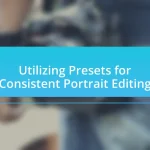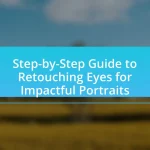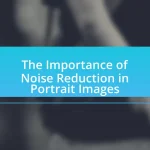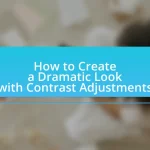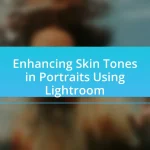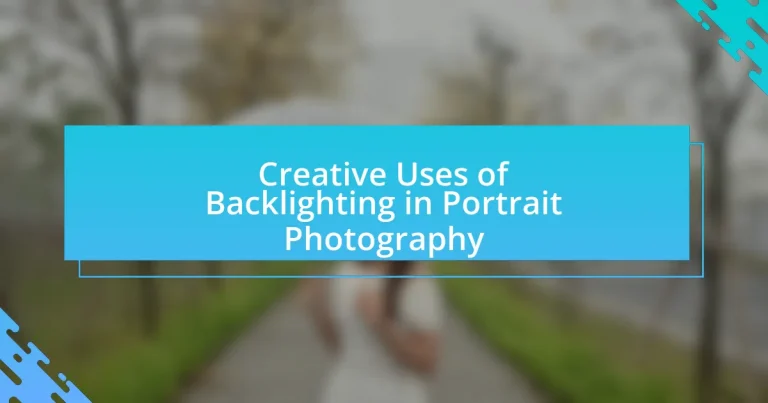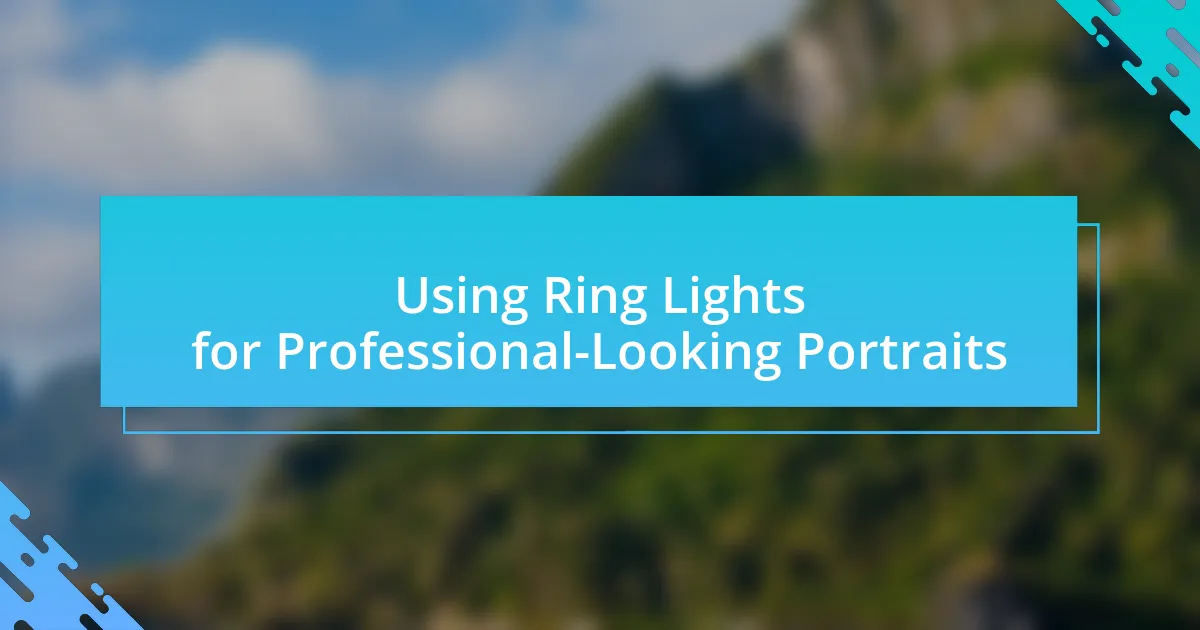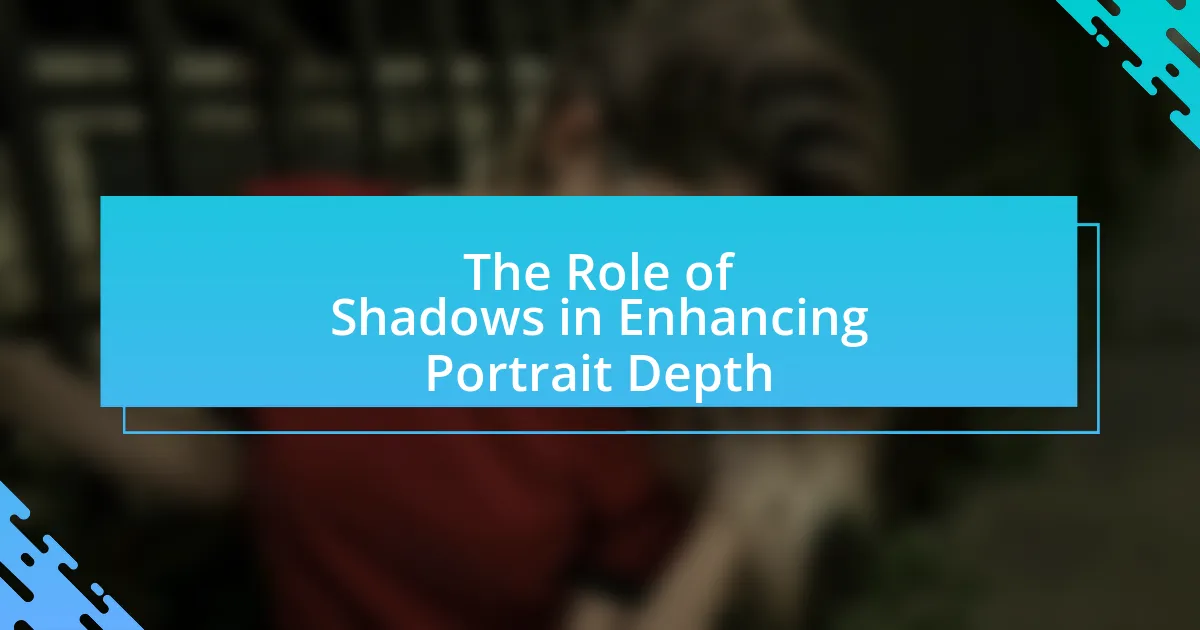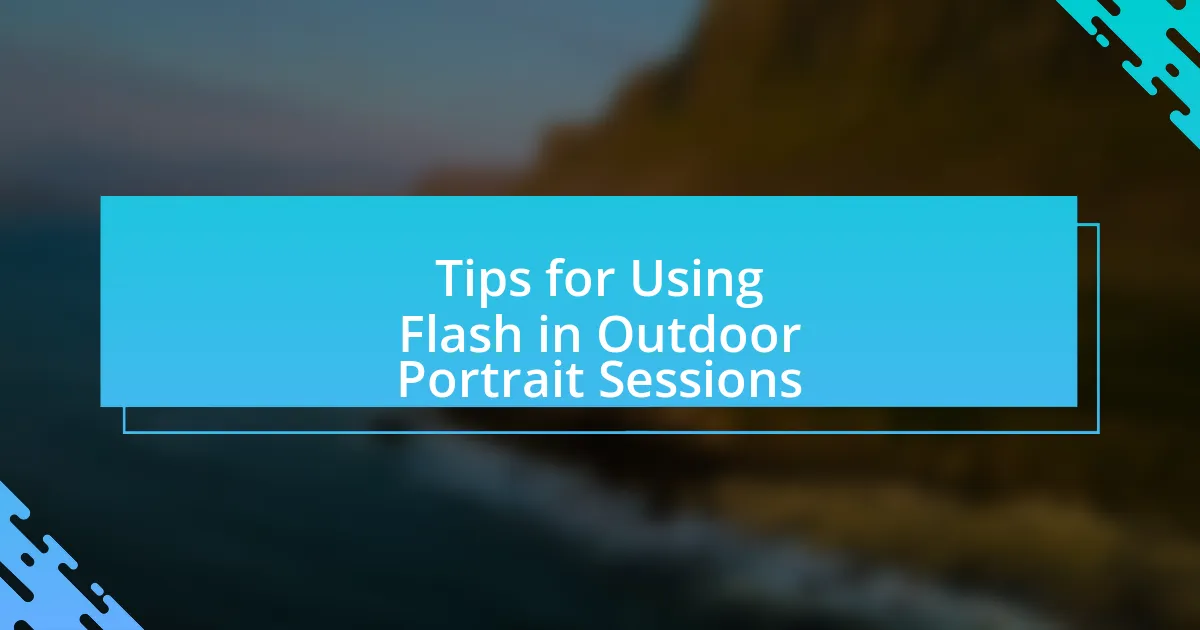Backlighting in portrait photography is a technique that involves positioning the light source behind the subject, creating effects such as silhouettes and halo outlines. This method enhances visual appeal by adding depth, dimension, and a soft glow, which can flatter skin tones and evoke emotional responses. The article explores various aspects of backlighting, including its impact on mood, the advantages of different techniques, and the use of natural versus artificial light. Additionally, it addresses challenges photographers may face, such as exposure issues and common mistakes, while providing tips for effective implementation and post-processing techniques to enhance backlit images.
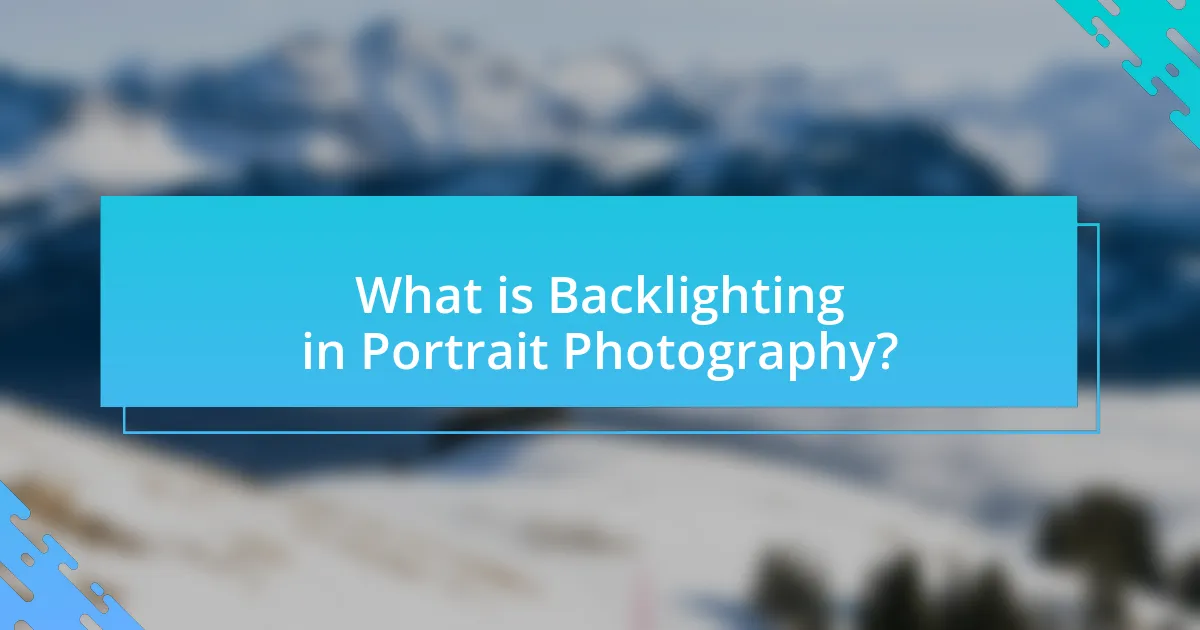
What is Backlighting in Portrait Photography?
Backlighting in portrait photography refers to the technique of positioning the light source behind the subject, creating a silhouette effect or highlighting the edges of the subject. This method enhances the visual appeal by adding depth and dimension, often resulting in a soft glow around the subject, which can emphasize features and create a dramatic atmosphere. The effectiveness of backlighting is supported by its ability to produce striking images that draw attention to the subject while simultaneously incorporating the surrounding environment, making it a popular choice among photographers for creative expression.
How does backlighting enhance portrait photography?
Backlighting enhances portrait photography by creating a halo effect around the subject, which adds depth and dimension to the image. This technique highlights the edges of the subject, making them stand out against the background and creating a visually striking contrast. Additionally, backlighting can produce a soft, diffused light that flatters skin tones and reduces harsh shadows, resulting in a more appealing portrait. Studies in photography indicate that using backlighting effectively can elevate the emotional impact of an image, as it often evokes a sense of warmth and intimacy.
What are the visual effects created by backlighting?
Backlighting creates a range of visual effects that enhance portrait photography by producing a halo effect around the subject, emphasizing outlines and shapes. This technique highlights the subject’s features while creating a sense of depth and dimension, often resulting in a dramatic contrast between the illuminated edges and the darker areas of the subject. Additionally, backlighting can produce lens flares and soft glows, adding an ethereal quality to the image. These effects are particularly effective in creating mood and atmosphere, making the subject stand out against the background.
How does backlighting influence the mood of a portrait?
Backlighting significantly influences the mood of a portrait by creating a sense of depth and drama. When the light source is positioned behind the subject, it can produce a halo effect, enhancing the subject’s features and adding an ethereal quality to the image. This technique often evokes emotions such as nostalgia or tranquility, as seen in various artistic works where backlighting is employed to convey a specific atmosphere. For instance, studies in photography demonstrate that backlighting can soften harsh facial features and create a more flattering representation, thereby impacting the viewer’s emotional response to the portrait.
Why is backlighting a popular technique among photographers?
Backlighting is a popular technique among photographers because it creates a dramatic effect that enhances the subject’s visual appeal. This technique allows light to shine from behind the subject, resulting in a halo effect that can add depth and dimension to the image. Additionally, backlighting can emphasize textures and shapes, making the subject stand out against a softer background. Studies have shown that images utilizing backlighting often evoke stronger emotional responses, as the contrast between light and shadow can create a sense of mystery and intrigue.
What are the advantages of using backlighting in portraits?
Backlighting in portraits creates a visually striking effect by illuminating the subject from behind, enhancing depth and dimension. This technique often results in a halo effect around the subject, which can add a sense of drama and separation from the background. Additionally, backlighting can highlight textures and details, such as hair and clothing, making them appear more vibrant. Studies in photography demonstrate that backlighting can evoke emotional responses, as it often conveys warmth and nostalgia, thereby enhancing the overall impact of the portrait.
How does backlighting differentiate a portrait from others?
Backlighting differentiates a portrait by creating a halo effect around the subject, enhancing depth and separation from the background. This technique emphasizes the contours and outlines of the subject, making them stand out more vividly against the light source. Additionally, backlighting can produce a soft glow that adds a dreamy quality to the image, which is often less pronounced in standard lighting setups. Studies in photography demonstrate that portraits utilizing backlighting can evoke stronger emotional responses due to their ethereal quality, making them more visually compelling compared to portraits lit from the front.
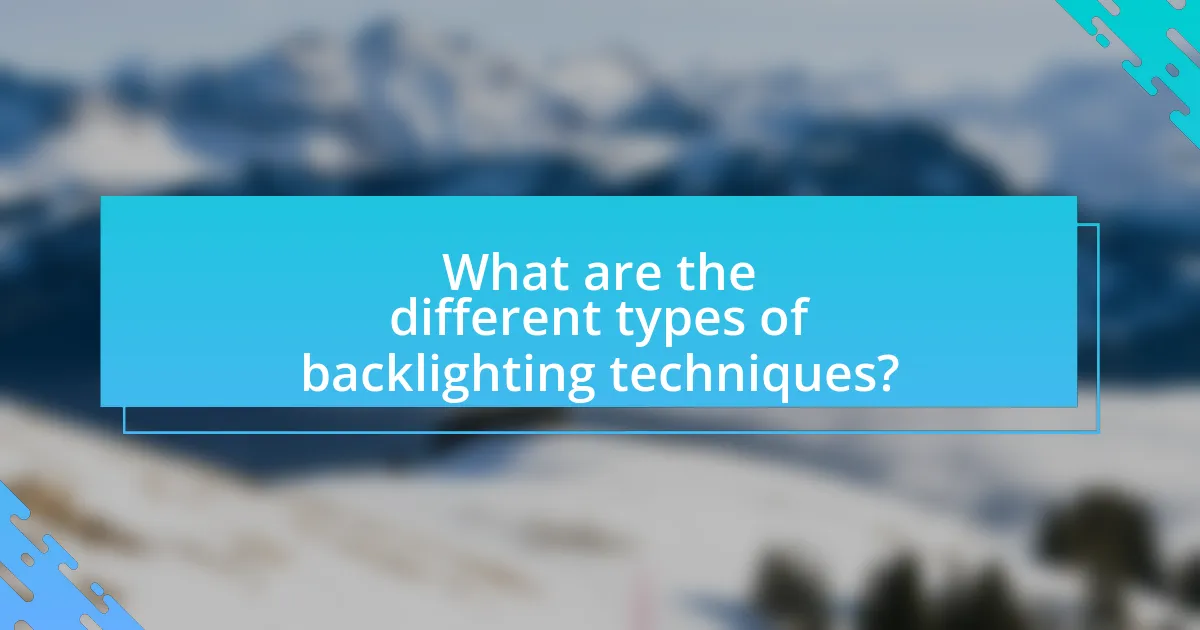
What are the different types of backlighting techniques?
The different types of backlighting techniques include rim lighting, silhouette lighting, and edge lighting. Rim lighting involves placing the light source behind the subject to create a glowing outline, enhancing the subject’s shape. Silhouette lighting occurs when the subject is entirely dark against a bright background, emphasizing form and contrast. Edge lighting focuses on illuminating the edges of the subject, adding depth and dimension. Each technique can dramatically alter the mood and visual impact of a portrait, making them essential tools in portrait photography.
How can natural light be used for backlighting?
Natural light can be used for backlighting by positioning the subject in front of a light source, such as the sun, which creates a halo effect around the subject. This technique enhances the subject’s outline and adds depth to the image, making it visually striking. Photographers often utilize this method during golden hour, when the sunlight is softer and warmer, to achieve a more flattering and ethereal look. The effectiveness of natural light as backlighting is supported by its ability to create contrast and highlight textures, which is essential in portrait photography.
What time of day is best for natural backlighting?
The best time of day for natural backlighting is during the golden hour, which occurs shortly after sunrise and before sunset. During this period, the sunlight is softer and warmer, creating an ideal environment for backlighting subjects in portrait photography. The angle of the sun is low, allowing for a pleasing glow around the subject, enhancing the overall aesthetic of the image. This phenomenon is widely recognized in photography, as the quality of light during the golden hour significantly improves the visual appeal of portraits.
How can weather conditions affect natural backlighting?
Weather conditions significantly influence natural backlighting by altering the intensity and quality of light. For instance, overcast skies diffuse sunlight, creating softer, more even lighting that reduces harsh shadows, which is ideal for portrait photography. Conversely, clear skies can produce strong, direct sunlight, resulting in high contrast and pronounced shadows, which may require careful management to avoid unflattering effects. Additionally, atmospheric elements like haze or fog can soften light further, enhancing the ethereal quality of backlighting. These variations in light due to weather conditions are crucial for photographers to consider when planning outdoor portrait sessions.
What artificial lighting options are available for backlighting?
Artificial lighting options available for backlighting include LED lights, strobes, and continuous lights. LED lights are energy-efficient and provide adjustable color temperatures, making them versatile for various settings. Strobes offer powerful bursts of light, ideal for freezing motion and creating dramatic effects in portrait photography. Continuous lights, such as softboxes or ring lights, allow photographers to see the lighting effect in real-time, facilitating better composition and adjustments. Each option serves distinct purposes, enhancing the creative use of backlighting in portrait photography.
How do studio lights create effective backlighting?
Studio lights create effective backlighting by positioning the light source behind the subject, which illuminates the edges and creates a halo effect. This technique enhances depth and separation from the background, making the subject stand out. The use of softboxes or diffusers can further soften the light, reducing harsh shadows and creating a more flattering appearance. Studies in photography demonstrate that backlighting can add drama and interest to portraits, as it highlights textures and shapes, contributing to a more dynamic composition.
What equipment is essential for achieving artificial backlighting?
To achieve artificial backlighting, essential equipment includes a light source, such as a flash or continuous light, and a light modifier, like a softbox or umbrella. The light source provides the necessary illumination to create a backlight effect, while the modifier helps diffuse and soften the light, enhancing the quality of the backlighting in portrait photography. This combination allows photographers to control the intensity and direction of the light, resulting in a more aesthetically pleasing image.

What are the challenges of using backlighting in portrait photography?
The challenges of using backlighting in portrait photography include difficulty in properly exposing the subject and achieving the desired level of detail. When the light source is behind the subject, it can create a silhouette effect, making it hard to capture facial features and textures. Additionally, backlighting can lead to lens flare, which may distract from the subject and reduce image clarity. Photographers must also manage the contrast between the bright background and the darker subject, often requiring adjustments in camera settings or the use of fill light to illuminate the subject adequately. These factors necessitate careful planning and technique to effectively utilize backlighting while maintaining the quality of the portrait.
How can photographers overcome exposure issues with backlighting?
Photographers can overcome exposure issues with backlighting by using techniques such as adjusting the exposure settings, utilizing reflectors, or employing fill flash. Adjusting the exposure settings allows photographers to compensate for the bright background by underexposing the shot, which helps to retain detail in the subject. Reflectors can bounce light onto the subject, illuminating them without altering the background exposure. Additionally, using fill flash can provide necessary light to the subject, ensuring they are well-lit despite the backlighting. These methods are effective in managing the contrast created by backlighting, allowing for balanced and visually appealing portraits.
What techniques can be used to balance light in backlit portraits?
To balance light in backlit portraits, photographers can use techniques such as fill flash, reflectors, and adjusting exposure settings. Fill flash provides additional light to the subject, counteracting the backlight and ensuring details are visible. Reflectors can bounce light onto the subject, softening shadows and enhancing facial features. Adjusting exposure settings, such as lowering the exposure compensation, allows the camera to capture more detail in the subject while maintaining the backlight effect. These methods are effective in achieving a well-balanced portrait that highlights the subject against a luminous background.
How does backlighting affect focus and sharpness in portraits?
Backlighting can create a halo effect around the subject, which may lead to a perceived decrease in focus and sharpness in portraits. This occurs because the light source behind the subject can cause lens flare and reduce contrast, making fine details less distinct. Additionally, the camera’s autofocus system may struggle to lock onto the subject when it is backlit, further impacting sharpness. Studies in photography indicate that using a lens hood or adjusting exposure settings can mitigate these effects, allowing for clearer and sharper portraits even in backlighting conditions.
What common mistakes should photographers avoid when using backlighting?
Photographers should avoid overexposing the subject when using backlighting. This common mistake occurs when the light source behind the subject is too strong, leading to a loss of detail in the subject’s features. Proper exposure settings, such as adjusting the aperture or using exposure compensation, can help maintain detail while still capturing the effect of backlighting. Additionally, failing to use reflectors or fill flash can result in unflattering shadows on the subject’s face, diminishing the overall quality of the portrait. By being mindful of these factors, photographers can effectively utilize backlighting to enhance their portraits.
How can improper backlighting lead to unflattering portraits?
Improper backlighting can lead to unflattering portraits by creating harsh shadows and overexposed highlights on the subject’s face. When the light source is positioned behind the subject without proper control, it can obscure facial features, resulting in a lack of detail and depth. This effect is particularly pronounced when the background is significantly brighter than the subject, causing the camera to underexpose the subject’s face. Studies in photography highlight that optimal lighting conditions are crucial for capturing flattering images, as they enhance the subject’s features and maintain a balanced exposure.
What are the signs of overexposure in backlit images?
The signs of overexposure in backlit images include loss of detail in bright areas, where highlights appear washed out, and a lack of texture in subjects due to excessive brightness. Additionally, overexposed images often exhibit a flat appearance, with diminished contrast and color saturation. These characteristics occur when the camera sensor captures too much light, resulting in clipped highlights that cannot be recovered in post-processing.
What tips can enhance the use of backlighting in portrait photography?
To enhance the use of backlighting in portrait photography, position the subject in front of a light source to create a halo effect around them. This technique emphasizes the subject’s outline and adds depth to the image. Additionally, using a wide aperture can help achieve a shallow depth of field, which blurs the background and draws attention to the subject. Experimenting with different angles and distances from the light source can also yield varied results, allowing for creative effects such as lens flare or soft glows. Utilizing reflectors can bounce light back onto the subject, reducing harsh shadows and enhancing facial features.
How can positioning and angles improve backlit portraits?
Positioning and angles significantly enhance backlit portraits by controlling light exposure and creating depth. Proper positioning allows the subject to be framed against the light source, which can create a halo effect that emphasizes the subject’s outline. Additionally, varying angles can manipulate the intensity of the backlight, allowing for softer or more dramatic effects. For instance, shooting from a lower angle can accentuate the subject’s features while capturing more of the light’s diffusion, resulting in a more ethereal look. This technique is supported by the principle that light direction affects the perception of depth and dimension in photography, as noted in studies on lighting in visual arts.
What post-processing techniques can enhance backlit images?
Post-processing techniques that can enhance backlit images include adjusting exposure, increasing contrast, and utilizing selective color adjustments. Adjusting exposure helps to recover details in the shadows, which is crucial for backlit subjects that may appear too dark. Increasing contrast can add depth and dimension, making the subject stand out against the bright background. Selective color adjustments allow for fine-tuning specific hues, enhancing the overall mood and vibrancy of the image. These techniques are commonly used in photo editing software like Adobe Lightroom and Photoshop, where tools such as curves, levels, and color balance can be effectively applied to achieve the desired results.

